
by Anne Mooney | Nov 30, 2021 | News
Local Author Geri Throne to Discuss Debut Novel at WPPL Virtual Author Salon
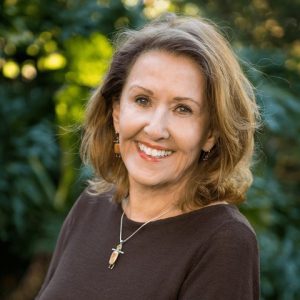 Co-hosted by the Winter Park Library and the Winter Park Voice, the library’s new online “Virtual Author Salon” will feature local author Geri Throne as she discusses her debut novel, Secret Battles, on Tuesday, December 7, 6:00 to 7:00 p.m.
Co-hosted by the Winter Park Library and the Winter Park Voice, the library’s new online “Virtual Author Salon” will feature local author Geri Throne as she discusses her debut novel, Secret Battles, on Tuesday, December 7, 6:00 to 7:00 p.m.
Throne, now retired from a career as a reporter and editor at the Orlando Sentinel, is a frequent contributor to the Voice. Secret Battles is her first work of fiction.
In Secret Battles, a work of historical fiction inspired by Throne’s parents’ World War II experience, Throne explores war’s toll on faith and truth as a young couple, separated by war for more than three years, struggles to choose which secrets to keep from each other and which truths to reveal.
The author’s talk, moderated by Winter Park Voice editor Anne Mooney, will be followed by a live audience Q & A.
To join the Zoom meeting:
https://us02web.zoom.us/j/84268843877?pwd=amRIbTAvak1Dei9wcnBzekc4ZTZ4Zz09
Meeting ID: 842 6884 3877
Passcode: 947331
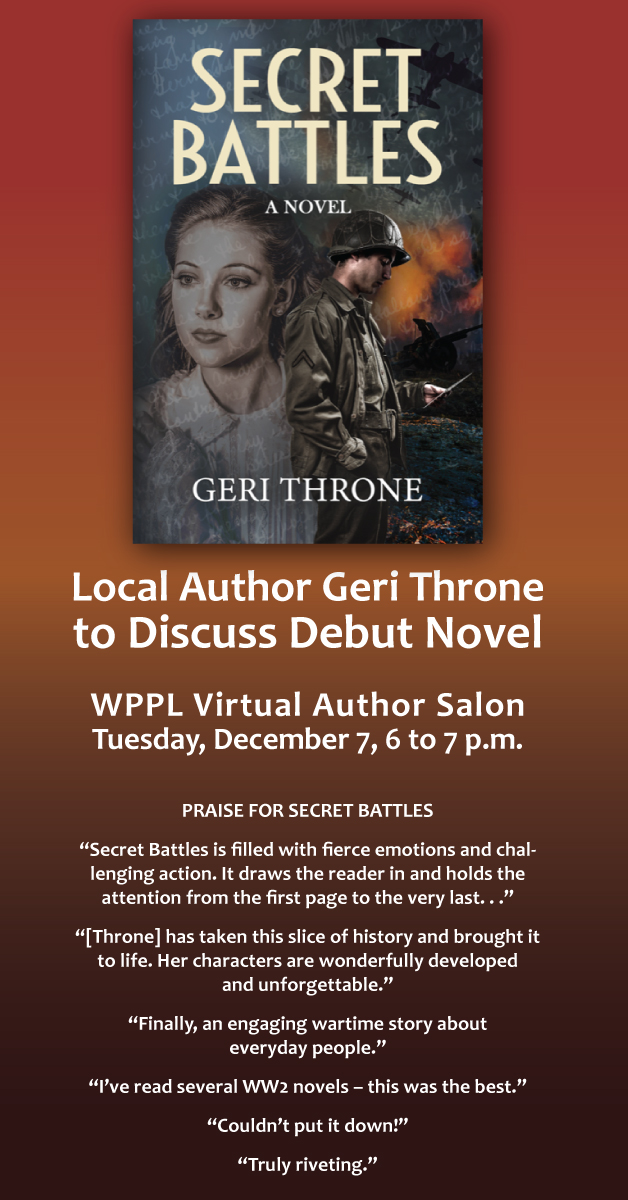
To comment or read comments from others, click here →
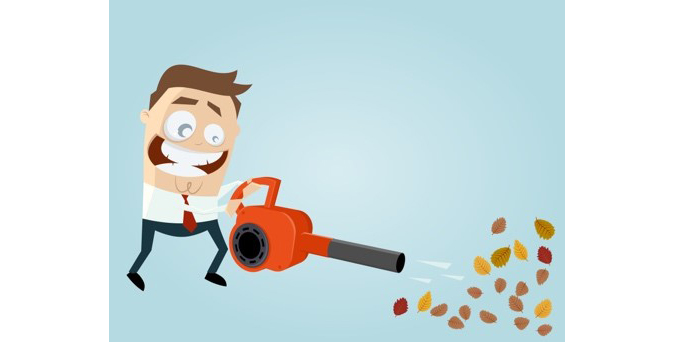
by Anne Mooney | Oct 4, 2021 | News, Zoning and Development
Gas-Powered Leaf Blowers
Love ‘em or Leave ‘em?
by Janet Hommel / October 4, 2021
If the reverie of your peaceful morning walk has ever been shattered by the reverberations of a leaf blower, or if you’ve been jolted awake when your neighbor’s lawn crew fired up, or if your Zoom meeting was drowned out by a landscaper working directly beneath your office window, help could be on the way.
Hundreds of cities across the country have significantly curtailed or even banned the use of landscaping tools powered by noisy two-stroke gas engines. Leading the way were cities in California, beginning in the 1970s. Places in the northeast followed suit. Now even municipalities in Florida have jumped on the bandwagon to improve the quality of life for their residents — cities like Palm Beach, Key Biscayne and Naples.
Where there’s a will, there’s a way . . . but is there the will?
Recently, the City of Winter Park emailed residents a comprehensive survey about leaf blowers. The survey is still on the City website, and the link will be live through October 6. If you haven’t yet completed the survey, you can do so by clicking here.
The Keep Winter Park Beautiful and Sustainable Advisory Board created the survey to gauge residents’ sentiments regarding the possibility of imposing new restrictions on the types of leaf blowers used and/or the hours of operation.
If the will is there, citizens must take the lead
If the use of gas leaf blowers is to be curtailed in Winter Park, citizens must lead the way. City leaders generally have little appetite for imposing new restrictions unless residents are clamoring for them. It is up to all of us to educate ourselves, understand the tradeoffs and tell City leaders what we think.
What’s so bad about leaf blowers anyway . . . besides the awful noise?
The source of the problem is the antiquated two stroke engine design which has little improved since the early 1900s. These relics of the past slosh around a mixture and oil and gas then spew out up to one-third of the fuel mixture in a toxic aerosol. Ever notice that scent of benzene wafting in the air near a lawn crew? This is even more dangerous for the worker than it is for the environment.
Jim Fallows wrote in the April 2019 Atlantic magazine, “By 2020, gas-powered leaf blowers, lawn mowers, and similar equipment in the state could produce more ozone pollution than all the millions of cars in California combined. Two-stroke engines are that dirty. Cars have become that clean.“
The noise is inescapable
Gas-powered leaf blowers are demonstrably too loud. It is not unusual for backpack blowers to register up to 110 decibels near the operator. This is not safe. OSHA permits exposure up to 90 dBA for an 8-hour day. For each 5 dBA over that, exposure time must be cut in half. Do the math — OSHA does not permit workers to be exposed to the level of noise emitted by backpack gas blowers for more than 30 minutes a day. Studies show work crews will experience hearing loss after about 10 years of use.
Gas-powered blowers emit a low-frequency sound that seems to follow you everywhere. Unlike high pitched noises, like drills, the racket from gas blowers travels a long distance and penetrates walls and windows. There is no escaping this noise unless you get in your car and drive to Starbucks, praying that they too are not seizing the opportunity to blow clear the premises.
If gas-powered blowers are bad, why do landscape contractors love them?
Three guesses. It’s the bottom line. The fastest, and therefore cheapest, way for a landscape contractor to move debris is not with a rake and broom or with an electric blower, it’s with that ear-splitting, particulate-spewing gas blower. And if the majority of Winter Park residents are more worried about the size of their landscaping bills than they are about worker safety, the environment and the general quality of life, we might as well stop talking right now.
Are battery-powered blowers quieter?
Electric blowers are much quieter, but don’t expect silence. They still create some noise, just not that wall-piercing low-frequency noise generated by the two-stroke motors in gas-powered leaf blowers.
How does performance stack up to gas?
While the performance of battery-powered equipment is catching up, they are not yet able to blow 200-MPH winds out the end of the nozzle. They are great for clearing dry clippings, but moving heavier wet debris may take longer. And time is money.
The biggest problem with battery blowers is the initial capital expense for contractors. The batteries are expensive. And with the current state of technology, a contractor will either need to invest in multiple batteries or use a generator.
Naples, FL is currently undergoing the transition to battery-powered blowers. David Mahl, a Naples-based landscape contractor with a 10-man crew explained the tradeoffs of switching to electric. He said it cost him about $10,000 to buy new equipment. He is not happy with the monetary costs of the switch, but understands it is the wave of the future and that all landscaping tools will eventually be battery operated. He had feared clients might find the results not as tidy but, so far, clients are happy with quieter blowers. He hasn’t decided if needs to pass along a price increase.
Sound off
Two-stroke engines have been regulated out of use in almost all other applications. Lawn equipment for homeowners is already trending toward battery power, but landscape contractors are dragging their feet. No one wants to incur the expense of switching when the competition can keep using cheap, noise-polluting equipment. That’s where Winter Park has to step in.
If you want some peace and quiet, let your Mayor and Commissioners know. Write mayorandcommissioners@cityofwinterpark.org
To comment or read comments from others, click here →
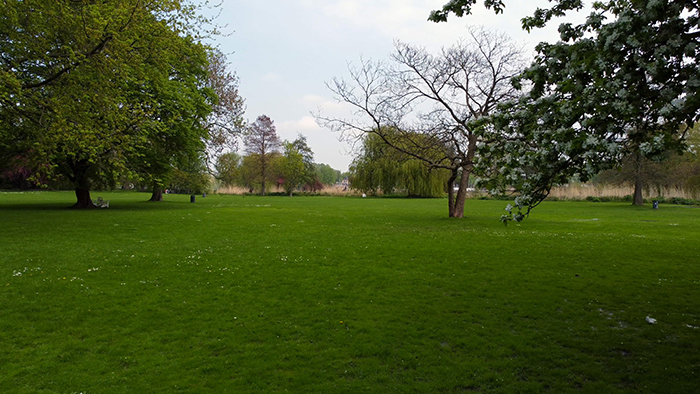
by Anne Mooney | Oct 3, 2021 | Tree Canopy, Zoning and Development
Fresh Air & Sunshine
Passive Green Space is Essential to Livable Communities
Guest Columnist Paul Owens / October 3, 2021
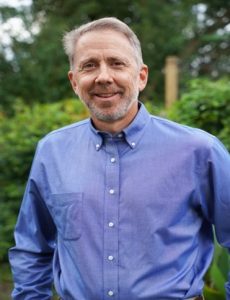 Living in Orwin Manor, a neighborhood that straddles the Orlando-Winter Park line, but leading an organization headquartered in Tallahassee, I regularly make the 250-mile trip by car between my home and the state capital. My favorite place to stop on the way is about halfway in between: a stretch of grass and trees in Fanning Springs on the banks of the Suwannee River. It’s a pocket, passive park, with a small parking area, a restroom and some picnic tables, adjoining a larger state park that has more amenities but also an admission fee.
Living in Orwin Manor, a neighborhood that straddles the Orlando-Winter Park line, but leading an organization headquartered in Tallahassee, I regularly make the 250-mile trip by car between my home and the state capital. My favorite place to stop on the way is about halfway in between: a stretch of grass and trees in Fanning Springs on the banks of the Suwannee River. It’s a pocket, passive park, with a small parking area, a restroom and some picnic tables, adjoining a larger state park that has more amenities but also an admission fee.
I’ve come to look forward to my stops in Fanning Springs as a break to de-stress and enjoy nature. I don’t care about the lack of a concession stand or a souvenir shop. A few minutes of fresh air and sunshine are all I need. Judging from the folks I see at the picnic tables, I’ve got plenty of company.
Since the global COVID-19 pandemic arrived on our shores in the spring of 2020, Americans have flocked to parks as safe places when venturing outside their homes. A survey conducted by the National Recreation and Park Association (NRPA) concluded that 260 million people in the United States — almost 80 percent — visited a local park or recreation facility at least once between May 2020 and May 2021.
Parks — critical to business relocation decisions
Parks are wildly popular. Some 80 percent of U.S. adults look for high-quality parks and recreation in choosing where to live, according to NRPA. Even more, 87 percent, consider parks and recreation an important service provided by their local government. Businesses rank quality parks and recreation among their top three factors in relocation decisions. Communities with growing populations need to add green spaces to maintain or, better yet, improve their quality of life. My organization, 1000 Friends of Florida, believes parks are a critical part of livable communities.
The Trust for Public Land (TPL), in its latest annual report rating park systems across the country, ranked St. Petersburg tops in Florida at No. 14 among 100 U.S. cities. In St. Pete, 75 percent of residents live within a 10-minute walk of a park, and more than one acre in 10 is dedicated to parks and recreation. The city’s 168 parks are a mixture of large parks with an array of recreational facilities and other amenities, and small, passive parks, without buildings or extensive paved areas.
Orlando’s Constitution Green
Five years ago, Orlando went to extraordinary lengths to preserve one of its small, passive parks. The city paid $3.34 million in cash and handed over a half-acre city-owned parcel of property worth another $2.5 million to take possession of Constitution Green, a park of less than two acres occupying a block in downtown Orlando, to save it from possible development. Constitution Green is most revered as the site of a huge, majestic oak tree estimated to be at least 125 years old. The park’s only other amenity is a dog run. Yet the city’s substantial investment met with resounding public approval.
There are numerous documented benefits of parks and green spaces for surrounding communities. They improve public health, both physical and psychological. They provide gathering spaces for families and diverse groups of people, especially when they are accessible free of charge. They beautify communities and increase nearby property values. They reduce flooding.
And notably for a state where rising temperatures are a growing concern, parks reduce temperatures, especially when they are more oriented toward grass and trees than buildings and pavement, according to TPL. They are natural cooling stations. TPL’s analysis of 14,000 cities and towns found that areas within a 10-minute walk of a park are as much as 6 degrees cooler than more distant areas.
While 81 percent of U.S. residents look to parks as a place to exercise, even more, 85 percent, appreciate them as outdoor spaces where they can relax and reflect, according to NRPA. This popularity of the passive element of parks suggests, to be visited and valued, an urban green space doesn’t need services already offered by nearby businesses, or any other bells and whistles. In a sea of rooftops, concrete and pavement, there’s much to be said for a verdant island of serenity.
Paul Owens is president of 1000 Friends of Florida, a nonpartisan, nonprofit organization based in Tallahassee and dedicated to sustainable communities. The opinions expressed in this column are his own.
To comment or read comments from others, click here →

by Anne Mooney | Sep 10, 2021 | News
City Adopts COVID Vaccine Policy
Protects City Workers & Residents
by Anne Mooney / September 9, 2021
On Sept. 9, the Orlando Sentinel reported a story titled “Unvaccinated employees face firing.”
In fact, termination of employment would be the last resort, and would not take place without due process. The City’s COVID-19 vaccination and testing policy is clearly laid out in a document in the September 8 Commission Meeting Agenda Packet. Highlights of that policy are below, and are anything but draconian.
COVID-19 Requirements
The City’s COVID-19 testing policy states, “All City employees are required no later than September 20, 2021 to either (a) establish that they have been fully vaccinated . . . or (b) produce weekly negative COVID-19 test results . . . . Vaccination and/or testing is required even if an employee previously tested positive for COVID-19. . . . To facilitate employees receiving the COVID-19 vaccine, the City will allow employees to attain the vaccine while on duty. . . .”
Testing Procedures for City Employees
City policy goes on to state: “Employees who do not provide documentation establishing that they are fully vaccinated shall be required to undergo diagnostic testing once weekly. . . .”
Testing will be scheduled by the City, paid for by the City at a City-approved location during the employee’s working hours. An employee who prefers to be tested off-hours at their own expense must use an FDA approved PCR or antigen test and provide the results to Human Resources.
Employees who test positive for COVID-19 will be required to quarantine in accordance with CDC guidelines.
Failure to comply
Effective September 27, employees who do not provide proof of full vaccination and who fail to provide a negative COVID-19 test weekly may be placed on unpaid leave until they provide proof of full vaccination and/or a negative test result. These employees may be subject to discipline up to and including discharge from employment. Employees seeking medical or religious accommodation should contact Human Resources. Falsification of immunization documentation, test results or accommodation request will be grounds for dismissal.
City falls short of 65 percent goal
On August 2, the City announced a voluntary employee COVID-19 vaccination incentive to encourage unvaccinated employees to become fully vaccinated by September 20. Education and incentives, however, failed to convince enough employees to become vaccinated. At the September 8 Commission meeting, City Manager Randy Knight reported 218 City employees had submitted proof of full vaccination – 35 employees short of the 316 employees it would take to reach the 65 percent threshold of 316 employees.
Acknowledging its responsibility to its employees to provide a work environment conducive to the safe delivery of City services, the City has implemented the policy outlined above.
What is ‘herd immunity’?
According to the World Health Organization (WHO) website, herd immunity occurs when a given disease ceases to spread among a population. In terms of population percentage required, herd immunity is different for each disease. Herd immunity for measles is 95 percent, while for polio the threshold is 80 percent. No one yet knows what herd immunity is for COVID-19, only that we’re nowhere near it.
Asked for his opinion about the current vaccination policy, Commissioner Marty Sullivan had this to say. “From a personal standpoint, polio extremely affected our family when my sister got it in 1948. After that, there was no question about vaccines. When they became available, we just did it. No questions asked.
“The Salk vaccine eradicated polio in this country because, all at once, everyone got the vaccine. If we had all gotten vaccinated against COVID-19 early on, we could have avoided the Delta variant breakthrough.
Sullivan went on to explain, “The Salk vaccine was released in 1955. By 1957, after mass vaccinations, the number of cases recorded annually in the U.S. fell from 58,000 to 5,600 cases. By 1961, the U.S. recorded only 161 cases. We will be living with COVID-19 for as long as people refuse to get vaccinated. Not a good prospect for us.”
To comment or read comments from others, click here →

by Anne Mooney | Aug 19, 2021 | News
City Urges Employees: Get Vaxxed!
by Anne Mooney / August 19, 2021
At the July 28 Commission meeting, City Manager Randy Knight was asked to develop an incentive program to encourage City employees to become vaccinated against COVID-19. On Monday, Aug. 2, Knight introduced a voluntary incentive program that awarded any employee with proof of full vaccination a $150 bonus plus a day off with pay. To qualify for the incentive program, employees would have to produce proof of full vaccination by September 15.
Weekly COVID tests required for unvaccinated employees
Beginning September 20, employees who are unable or unwilling to present proof of vaccination will undergo mandatory weekly testing. Any unvaccinated employee who is unable to provide a negative COVID-19 test result each week will be placed on leave without pay until they are able to produce a negative test result.
65 Percent by September 15
The City’s goal is for 65 percent of employees to be fully vaccinated by September 15. If fewer than 65 percent of employees participate in the voluntary vaccination program, the Commission will call a special meeting to determine next steps.
The City employs a total of 540 people; 472 are full-time, 47 are part-time, and 21 are seasonal or temporary. The 65 percent threshold, to be achieved by September 15, translates to 351 employees. According to Communications Director Clarissa Howard, as of August 18, 224 employees had provided proof of full vaccination.
KN95 masks available on request
In the meantime, KN95 masks are available to all employees upon request, and the City is following CDC guidelines for wearing face coverings while in public indoor facilities where 6-foot social distancing cannot be observed.
What is ‘herd immunity?’
The goal of vaccinating 65 percent of employees is based on an arbitrary estimate of vaccination levels required to reach ‘herd immunity.’ The percentage of people who need to be immune to achieve herd immunity varies with each disease, and the medical community does not yet know the level required for COVID-19.
According to the World Health Organization (WHO), “herd immunity against measles requires about 95% of a population to be vaccinated. The remaining 5% will be protected by the fact that measles will not spread among those who are vaccinated. For polio, the threshold is about 80 percent.”
“The proportion of the population that must be vaccinated against COVID-19 to begin inducing herd immunity is not yet known,” according to the WHO website. “This is an important area of research and will likely vary according to the community, the vaccine, the populations prioritized for vaccination, and other factors.
“Until we better understand COVID-19 immunity, it will not be possible to know how much of a population is immune or how long that immunity will last, let alone can we make future predictions.”
To comment or read comments from others, click here →

 Co-hosted by the Winter Park Library and the Winter Park Voice, the library’s new online “Virtual Author Salon” will feature local author Geri Throne as she discusses her debut novel, Secret Battles, on Tuesday, December 7, 6:00 to 7:00 p.m.
Co-hosted by the Winter Park Library and the Winter Park Voice, the library’s new online “Virtual Author Salon” will feature local author Geri Throne as she discusses her debut novel, Secret Battles, on Tuesday, December 7, 6:00 to 7:00 p.m. 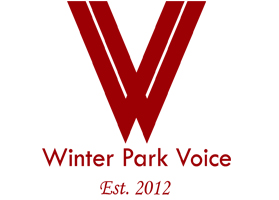






Recent Comments